What Type Of Technology Is VR?
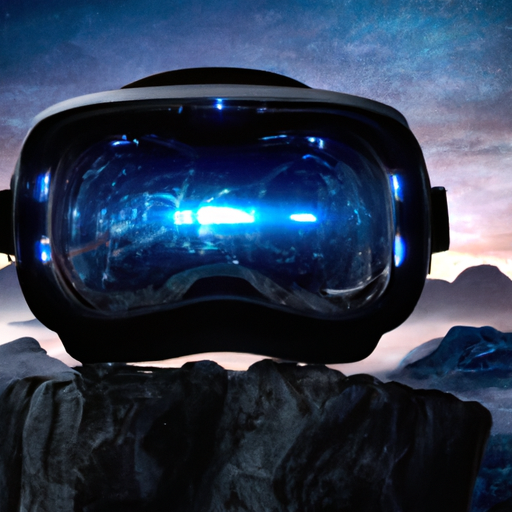
I’ve always been fascinated by the intricacies of virtual reality (VR). It’s a groundbreaking technology that has captured the imaginations of millions around the world. But have you ever wondered what type of technology actually powers VR? In this article, I’ll be exploring the various components that come together to create this immersive experience, shedding light on the fantastic world of VR technology.
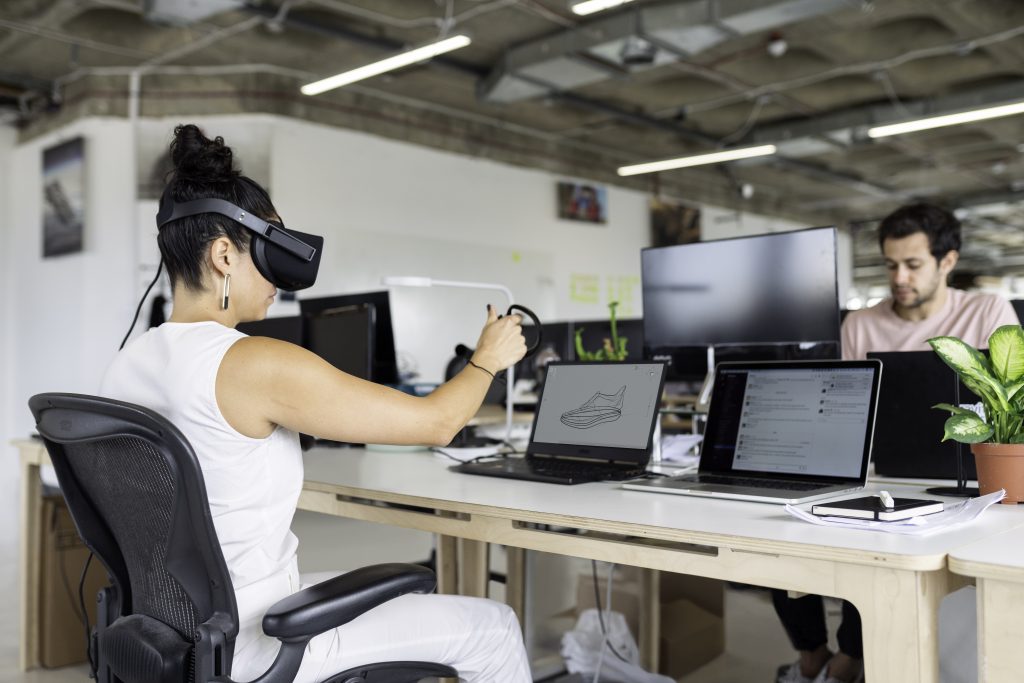
Understanding VR Technology
Virtual Reality (VR) technology is an innovative and immersive form of technology that enables users to experience and interact with computer-generated environments. It provides a simulated reality that can be similar to or completely different from the real world. By using specialized hardware and software, VR technology creates a sense of presence and allows users to feel as if they are truly present in a virtual environment. The significance of VR technology in today’s digital age cannot be overstated, as it has the potential to revolutionize various industries and change the way we live, work, and play.
Defining Virtual Reality
Virtual Reality is the use of computer technology to create a simulated environment that can be explored and interacted with by a user. It typically involves wearing a VR headset or goggles that display computer-generated images and simulate a three-dimensional environment. This immersive experience is often enhanced by other sensory inputs, such as sound and touch, to create a sense of presence and make users feel as if they are truly part of the virtual world. VR technology can provide an incredibly lifelike and realistic experience, blurring the line between the physical and virtual worlds.
Significance of VR Technology in Today’s Digital Age
In today’s digital age, VR technology offers a wide range of possibilities and benefits across various industries. From gaming and entertainment to education and healthcare, VR has the potential to transform how we experience and engage with content. It provides new ways of storytelling, enhances learning and training experiences, and opens up opportunities for remote collaboration and communication. With its ability to create highly immersive and engaging experiences, VR technology is poised to revolutionize the way we perceive and interact with the world around us.
Brief History of VR Technology
The concept of virtual reality has been around for several decades, but it wasn’t until the late 20th century that the technology started to develop rapidly. The first attempts at creating VR-like experiences can be traced back to the 1960s, when Ivan Sutherland developed the first head-mounted display (HMD) called the “Sword of Damocles.” However, the technology at the time was limited, and VR remained mainly in the realm of science fiction.
It wasn’t until the 1990s that significant advancements in hardware and software made VR more accessible and commercially viable. Companies like Sega and Nintendo introduced VR gaming systems, paving the way for the widespread adoption of VR in the gaming industry. However, due to technical limitations and high costs, VR technology remained relatively niche.
In recent years, advancements in processing power, display technology, and motion tracking have led to a resurgence in VR technology. Companies like Oculus, HTC, and Sony have released consumer-focused VR headsets, making virtual reality more accessible to a wider audience. VR technology has also found applications beyond gaming, with industries like healthcare, education, and architecture embracing its potential.
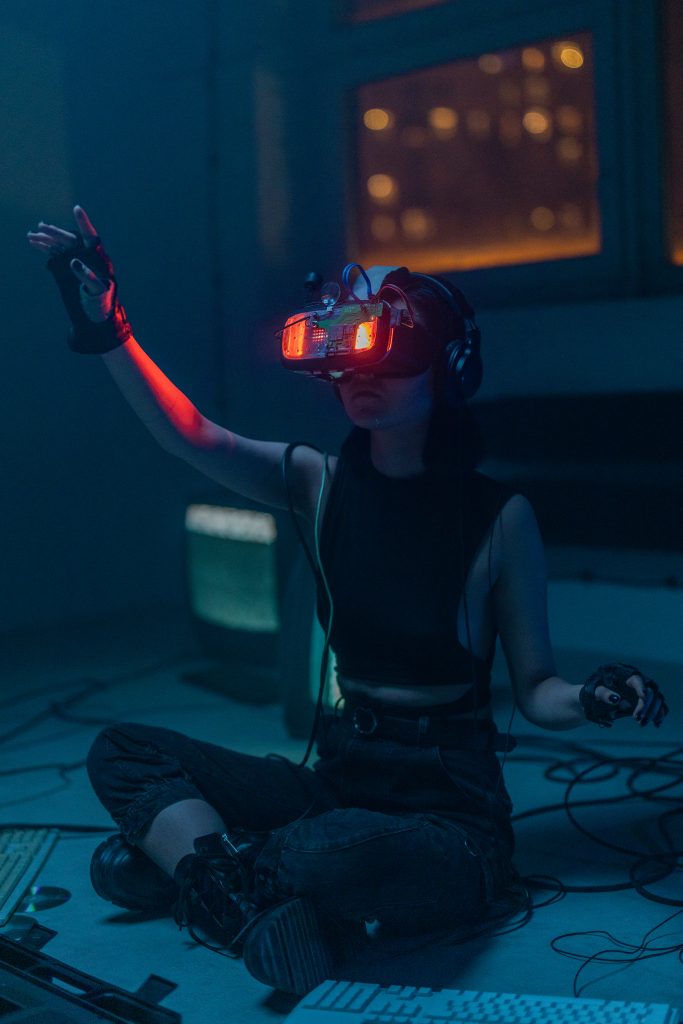
Components of VR Technology
To understand how VR technology works, it is essential to familiarize ourselves with its key components: VR hardware, VR software, and various types of VR devices.
VR Hardware
VR hardware refers to the physical components that enable users to experience virtual reality. The most crucial piece of hardware is the VR headset or goggles, which display the virtual environment to the user. These headsets often include built-in displays, lenses, and sensors to track the user’s head movements and provide an immersive experience. Other essential hardware components include handheld controllers, haptic feedback devices, and motion tracking systems.
VR Software
VR software plays a crucial role in creating and simulating virtual environments. It includes various programs, algorithms, and applications that generate the visuals, sound, and interactivity of the virtual world. VR software can range from simple 3D modeling tools to complex game engines and simulation software. Developers and content creators use VR software to create realistic and interactive virtual environments for different applications, such as gaming, training, and visualization.
Types of VR Devices
There are several types of VR devices available, each offering a different level of immersion and interactivity. The most common VR devices include tethered VR headsets, standalone VR headsets, and mobile VR headsets.
Tethered VR headsets are connected to a powerful computer or gaming console, providing high-quality visuals and immersive experiences. Standalone VR headsets, on the other hand, incorporate all the necessary hardware, including processors and displays, into the headset itself, eliminating the need for external devices. These headsets offer greater mobility and ease of use. Mobile VR headsets, such as Google Cardboard and Samsung Gear VR, utilize smartphones to display VR content. While these headsets offer limited graphics and processing power, they provide an affordable entry point into VR technology.
How Does VR Technology Work?
To create highly realistic and interactive virtual environments, VR technology relies on various principles and technologies. Understanding the science behind virtual environments and the role of sensors and trackers is crucial to understanding how VR technology works.
The Science Behind Virtual Environments
The key to creating convincing virtual environments lies in fooling the user’s senses. By stimulating the user’s visual, auditory, and sometimes tactile senses, VR technology tricks the brain into perceiving the virtual world as if it were real. The use of stereoscopic displays and head tracking technology helps create a sense of depth and motion, while spatial audio and haptic feedback enhance the immersion.
Creating Interactive 3D Virtual Environments
Creating realistic 3D virtual environments involves combining various elements, such as 3D modeling, texturing, and lighting, to recreate the look and feel of the real world or a fictional setting. Advanced graphics rendering techniques and physics simulations are used to ensure smooth visuals and realistic interactions. Content creation tools, such as game engines, make it easier for developers to design and build virtual environments with interactivity and dynamic elements.
Role of Sensors and Trackers in VR
To track the user’s movements and translate them into the virtual environment, VR systems utilize a combination of sensors and trackers. These sensors can include accelerometers, gyroscopes, and magnetometers, which measure the user’s head position and orientation. Some VR systems also use external motion tracking cameras or sensors placed in the room to track the user’s body movements accurately. By tracking the user’s movements in real-time, VR technology enables natural and immersive interactions within the virtual environment.
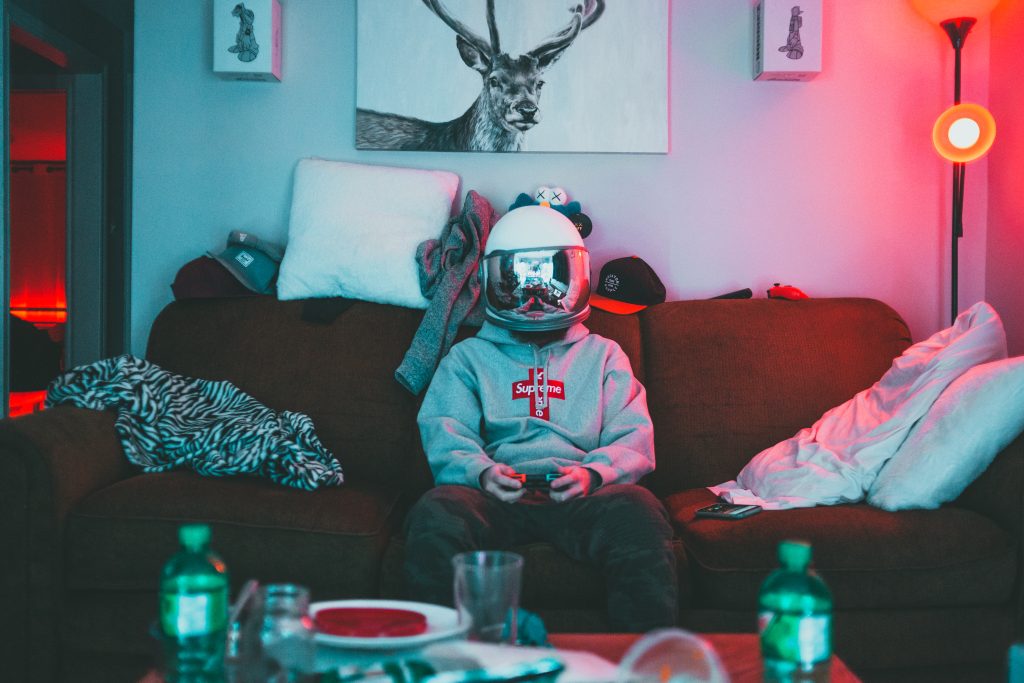
Types of VR: Non-Immersive
Non-immersive VR refers to VR experiences that do not fully immerse the user in a virtual environment. Instead, non-immersive VR provides a more limited and less realistic experience compared to fully immersive VR.
Definition and Examples of Non-Immersive VR
Non-immersive VR typically involves experiencing virtual environments through a computer screen or projection, without the use of specialized VR headsets. Examples of non-immersive VR include desktop-based virtual simulators, 360-degree videos or images, and augmented reality (AR) experiences. While these forms of VR offer some degree of interaction and immersion, they do not fully envelop the user in a virtual world.
Applications of Non-Immersive VR
Non-immersive VR has found applications in various fields, including architecture, design, and training. Architects and designers can use non-immersive VR to create virtual mockups of buildings and interiors, allowing clients to explore and visualize spaces before they are built. In the field of training and education, non-immersive VR can be used to simulate real-world scenarios, such as flight simulators for pilots or surgical simulators for medical students. These applications provide an enhanced learning experience and allow for safe and controlled practice.
Types of VR: Semi-Immersive
Semi-immersive VR offers a middle ground between non-immersive and fully immersive VR experiences. It provides a more immersive environment than non-immersive VR while still allowing users to maintain some awareness of the physical world.
Understanding Semi-Immersive VR
Semi-immersive VR typically involves the use of VR headsets or projection systems that partially block the user’s view of the real world. While users are still aware of their physical surroundings, the virtual environment takes precedence in their perception. Semi-immersive VR often incorporates motion tracking and interactive controllers, enabling users to interact with virtual objects and navigate the virtual space.
Real-World Applications of Semi-Immersive VR
Semi-immersive VR has found applications in various industries, particularly in training and simulation. For example, military organizations use semi-immersive VR to train soldiers in simulated combat scenarios, allowing them to practice critical skills and tactics in a safe and controlled environment. Semi-immersive VR is also used in rehabilitation therapy to help patients regain motor skills and mobility. By providing an interactive and engaging environment, semi-immersive VR can enhance the rehabilitation process and improve patient outcomes.
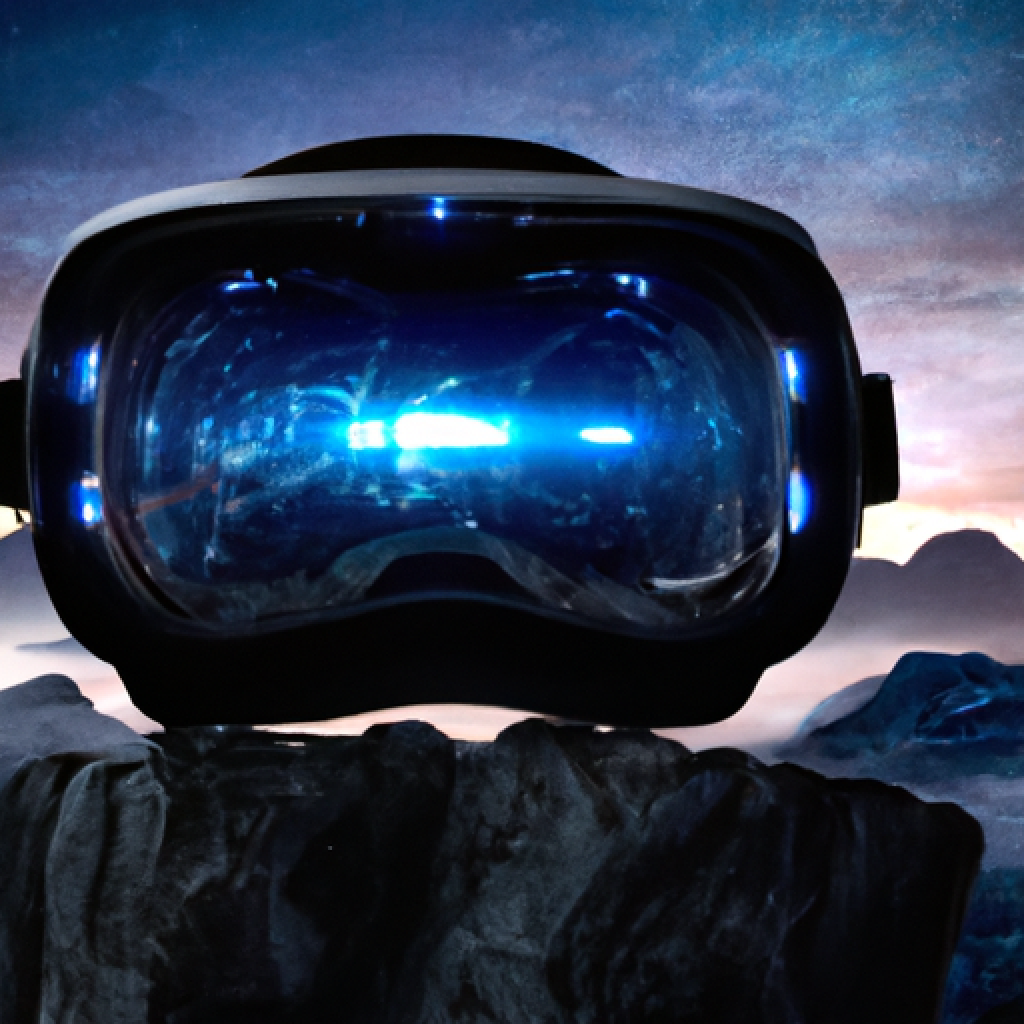
Types of VR: Fully-Immersive
Fully-immersive VR offers the highest level of immersion and realism, providing users with a complete sense of presence in a virtual world.
Features of Fully-Immersive VR
Fully-immersive VR involves the use of specialized VR headsets and hardware that completely block the user’s view of the physical world. These headsets provide high-resolution displays, precise motion tracking, and often incorporate additional sensory inputs, such as spatial audio and haptic feedback. Fully-immersive VR experiences can transport users to entirely new worlds, whether they are exploring the depths of the ocean, fighting imaginary creatures in a fantasy realm, or flying through space.
Use Cases for Fully-Immersive VR
Fully-immersive VR has gained significant popularity in the gaming and entertainment industry. With fully-immersive VR gaming, players can physically move and interact within the virtual environment, making gameplay more engaging and realistic. Fully-immersive VR experiences are not limited to gaming, however, as they have also found applications in therapy, relaxation, and creative expression. Virtual therapy sessions can help individuals overcome phobias and anxieties, while VR art platforms allow artists to create immersive and interactive artworks.
Consumer Uses of VR Technology
VR technology has experienced significant growth and adoption by consumers, primarily in the areas of gaming, entertainment, and virtual travel experiences.
VR in Gaming
Gaming has been one of the primary drivers of VR technology, with many companies investing in developing VR games and experiences. Fully-immersive VR gaming allows players to step into the shoes of their favorite characters and interact with virtual worlds like never before. Whether it’s exploring vast open worlds, engaging in intense combat, or solving puzzles, VR gaming provides an unparalleled level of immersion and realism.
VR in Entertainment
Beyond gaming, VR has also made its way into the entertainment industry. Concerts, sporting events, and live performances can be experienced in VR, allowing users to enjoy the front-row experience from the comfort of their homes. VR has also been used to create immersive storytelling experiences, such as 360-degree videos and interactive narratives. This form of entertainment provides a unique and immersive way to engage with content, blurring the line between the viewer and the storyteller.
VR for Virtual Tours and Travel
Virtual reality has opened up new possibilities in the tourism and travel industry. With VR, users can take virtual tours of famous landmarks, museums, and cities from around the world. They can also experience thrilling adventures, such as scuba diving or roller coaster rides, without leaving their homes. VR travel experiences offer a convenient and immersive alternative for individuals who are unable to travel physically or want to preview destinations before planning a trip.

Commercial Applications of VR Technology
While consumer uses of VR technology have gained attention, the commercial applications of VR are equally promising, with applications in education, healthcare, and architecture.
VR in Education and Training
VR technology has the potential to revolutionize education and training by providing immersive and interactive learning experiences. From virtual science labs and historical reconstructions to language learning and professional skills training, VR can enhance traditional educational methods. It allows students to explore concepts visually, practice hands-on skills in a safe environment, and collaborate remotely with peers and instructors. VR also benefits professionals in various fields by providing realistic simulations for training and continuous professional development.
VR in Healthcare
The healthcare industry has embraced VR technology for a wide range of applications. VR can help medical professionals practice complex procedures, improve surgical techniques, and simulate challenging medical scenarios. It can also be used for pain management, distraction therapy, and rehabilitation. VR therapy has shown promising results in treating conditions such as post-traumatic stress disorder (PTSD), phobias, and chronic pain. Additionally, VR can be used to provide virtual appointments and remote consultations, increasing access to healthcare services.
VR in Architecture and Design
In the field of architecture and design, VR technology offers new ways to visualize and present projects. Virtual reality allows architects, designers, and clients to experience and navigate virtual buildings and spaces before they are constructed. It provides a more immersive and accurate representation of the final result, helping to identify potential issues and make informed design decisions. VR technology also enables collaborative design sessions, where multiple stakeholders can virtually explore and discuss design options, facilitating better communication and consensus.
The Future of VR Technology
As technology continues to advance, the future of VR technology looks promising, with advancements in hardware, software, and content creation pushing the boundaries of what is possible.
Advancements in VR Technology
Advancements in VR technology are focused on improving the overall VR experience, with a particular emphasis on enhancing immersion and reducing the limitations of current systems. This includes developing higher-resolution displays, reducing motion sickness and latency, improving haptic feedback, and increasing the field of view. Additionally, wireless VR technology is being developed to provide greater freedom of movement and eliminate the need for tethered setups.
Predicted Trends for VR
In the coming years, several trends are expected to shape the future of VR technology. Increased adoption by consumers, advancements in content creation tools, and the growth of social VR platforms will likely drive the development of more compelling and interactive experiences. Additionally, the integration of VR with other emerging technologies, such as augmented reality (AR) and artificial intelligence (AI), holds great potential for creating even more immersive and realistic virtual environments.
Impact of Future VR Applications on Society and Industry
The impact of future VR applications on society and industry has the potential to be transformative. In education, enhanced VR learning experiences can revolutionize traditional teaching methods, making education more engaging and accessible to students worldwide. In healthcare, VR can improve patient outcomes, enable remote care, and contribute to medical research and training. Industries such as architecture, design, and entertainment can benefit from more realistic virtual experiences, leading to improved design processes, immersive entertainment, and new forms of storytelling.
Challenges and Limitations of VR Technology
While VR technology holds great promise, it also faces various challenges and limitations that need to be addressed for wider adoption and acceptance.
Technical Challenges in VR
One of the main technical challenges in VR is the need for high-performance hardware to deliver realistic and immersive experiences. High-resolution displays, powerful processors, and advanced tracking systems can be expensive and require substantial computing power. The size and weight of VR headsets are also a concern, as comfort and mobility play a crucial role in user experience. Furthermore, motion sickness and simulator sickness are common issues in VR, as the discrepancy between virtual and real-world motions can cause discomfort and queasiness.
Criticisms and Health Concerns Tied to VR Usage
There are also criticisms and health concerns tied to VR usage, including the potential for addiction and isolation. Extended periods of VR use can lead to eye strain, fatigue, and disorientation, particularly when the hardware and software are not well optimized. Additionally, concerns have been raised about the long-term effects of VR on mental and emotional well-being, especially in vulnerable individuals. Ethical and privacy concerns related to data collection and sharing in VR applications also need to be addressed to ensure user trust and protection.
Solutions to Current VR Limitations
To overcome the challenges and limitations of VR technology, ongoing research and development efforts are focused on improving hardware capabilities, developing more comfortable and lightweight headsets, and reducing motion sickness. Advances in eye-tracking technology and foveated rendering can help optimize visual quality and reduce the computational requirements. Continued user education and guidelines for safe VR usage can also help minimize health risks and promote responsible VR experiences. Additionally, addressing privacy and ethical concerns requires industry-wide collaboration and the establishment of clear standards and regulations.
In conclusion, VR technology has come a long way since its inception, providing increasingly immersive and realistic experiences for consumers and businesses alike. From gaming and entertainment to education and healthcare, VR technology is transforming how we perceive and interact with the world. While it faces challenges and limitations, ongoing advancements and innovations in VR hardware, software, and content creation are driving the future of this exciting technology. With its potential to shape various industries and impact society, VR remains a fascinating and promising field that continues to push the boundaries of human experience.







